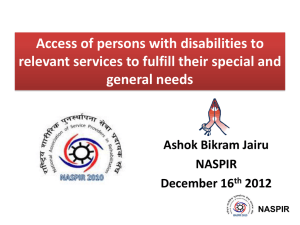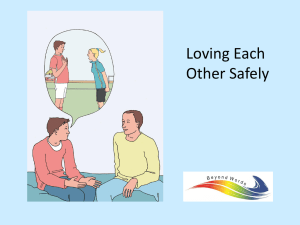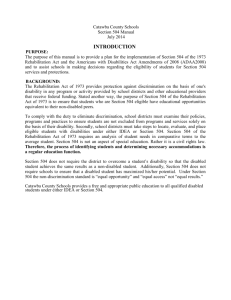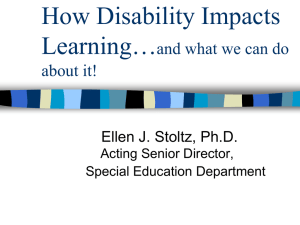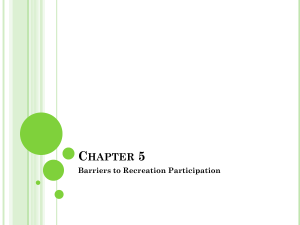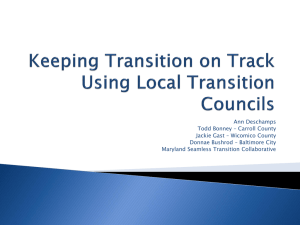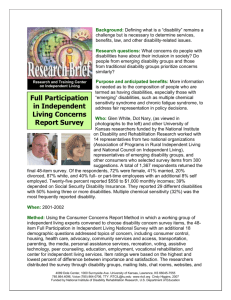Restorative Care and Rehabilitation
advertisement
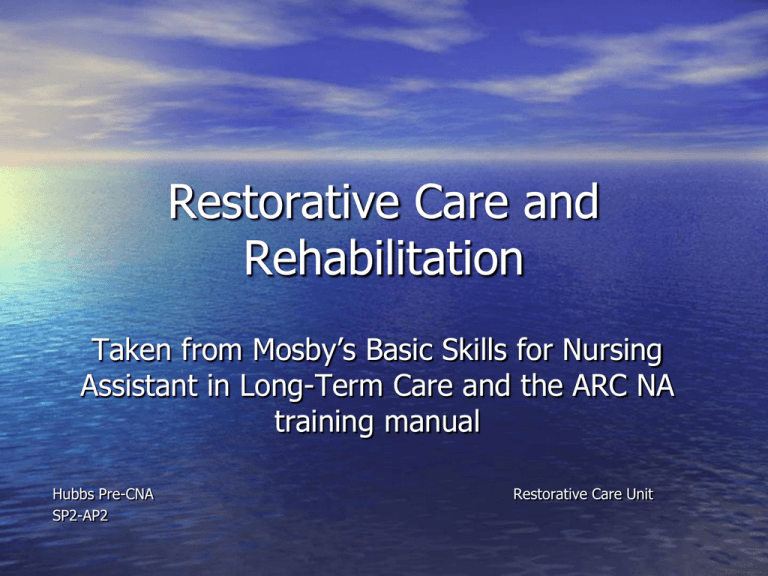
Restorative Care and Rehabilitation Taken from Mosby’s Basic Skills for Nursing Assistant in Long-Term Care and the ARC NA training manual Hubbs Pre-CNA SP2-AP2 Restorative Care Unit What is a disability? • Any lost, absent, or impaired physical or mental function • Can be temporary or permanent • Nervous system problems are a common cause of disabilities. • Can you name 3 temporary disabilities? • Can you name 3 permanent disabilities? How does a disability affect someone? • A disability has physical, psychological, and social effects. • The person with the disability needs to adjust to these changes. • Can you give an example of a psychological and social effect? Disabilities can affect the person’s ability to perform ADLs • Bathing • Oral hygiene • Dressing • Eating • Elimination • Moving What is Rehabilitation? The process of regaining physical and emotional health. Goals: • Improve function or prevent loss of further function. • Maintain the highest quality of life What is Restorative Nursing Care? (also called Rehab Nursing) • Part of the everyday care you provide that helps the rehabilitation process • Goal: help the person become as fully functional as possible and help him to be able to enjoy life • Promotes independence, dignity and self-esteem How can you help to restore a person’s highest quality of life? • Emphasize her abilities, not her disabilities. Encourage independence • Encourage activity as approved by the MD. Immobility can lead to many problems • Treat the whole person, not just the affected part of her body. This includes physical, emotional, social, etc. Self-Help Devices or Adaptive Devices: Promote Independence • This is equipment that has been modified or changed to meet the person’s needs. Recreational Activities • Fun activities such playing card games, music, dance, painting, etc. • Promotes physical and mental stimulation Immobility affects all body systems • Skin - Decubitus Ulcers • GI/Digestive - Constipation • Urinary: -UTI • Respiratory: -Pneumonia • Joints – Contractures • Muscular – Atrophy • Bones – Osteoporosis • Psychological – Decreased sense of well-being Contracture: • Is a lack of joint mobility caused by abnormal shortening (tightening) of the muscle. Muscle Atrophy “Use it or lose it” • The decrease in size or wasting away of tissue. Tissue shrinks in size. R.O.M: Range of Motion exercises • Encourages activity • It is the movement of joints through their complete range of motion • Helps prevent contractures and atrophy Ambulation: encourages mobility • The act of walking Ambulation Assistive Equipment • Walkers • Canes • Crutches Walkers: when resident needs support on both sides • Pick-up walkers • 2 or 4-wheeled walkers Canes: support needed on one side. • Place cane on strong (unaffected) side Crutches: Person can’t use one leg or both legs are weak. Quality of Life: • Successful rehabilitation and restorative care improves the person’s quality of life. • Be hopeful • The process may be slow and frustrating • Help the person have a positive attitude • Remember: treat the WHOLE person

